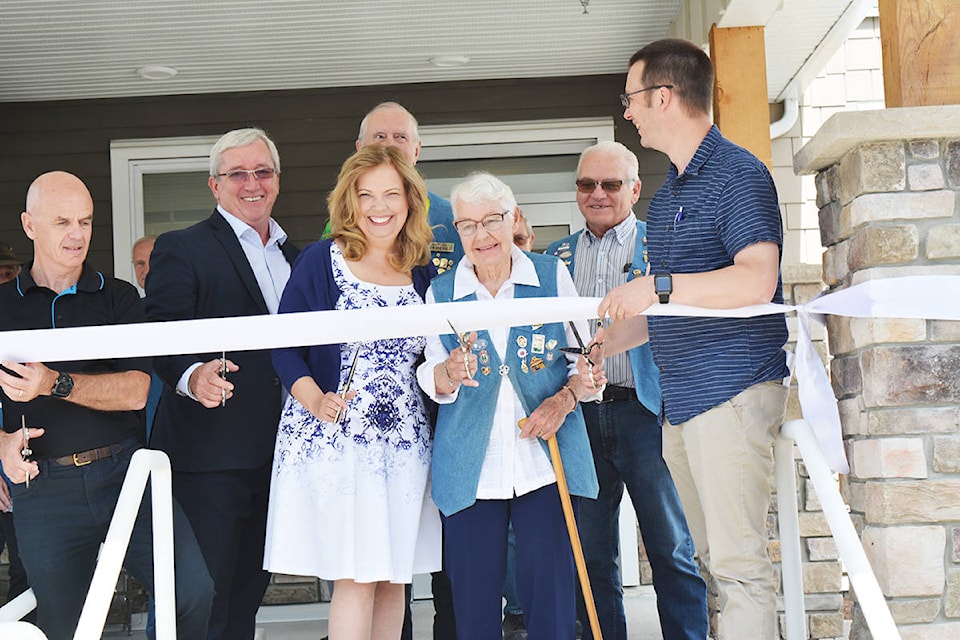The City of Quesnel and Cariboo Regional District will want to look at addressing market-rate housing needs, non-market housing needs, enhancing the supply of rental housing, enhancing housing affordability, maintaining the quality of the current housing stock, facilitating development on vacant or under-utilized lands, and preparing for anticipated growth in the population aged 65 and older.
Those are some of the overarching findings in a draft Housing Needs Assessment, Gap Analysis and Action Plan staff from Urbanics Consultants Ltd. presented to the North Cariboo Joint Planning Committee Tuesday, Oct. 8.
The report looks at housing for Cariboo Regional District Electoral Areas A, B, C and I and the City of Quesnel.
Some of the major findings of the analysis and assessment were a lack of serviced, desirable lands; a rapidly-aging population; declining household sizes; slow population growth; and challenges with local affordability.
Urban planner Sophee Payne told the committee that with the housing needs assessment, in both North Cariboo and Quesnel, they found low housing costs.
“There is huge attraction here because Quesnel is one of the most affordable places to live, but as far as the population, there is a significant low-income population that cannot afford, particularly a tenant population, that has difficulty [affording] their home in both Cariboo and Quesnel,” she said. “In Quesnel, it’s more acute.”
Payne says they found there is a shrinking household size in both North Cariboo and Quesnel, and that shrinking is happening quite quickly.
“In Quesnel, not in North Cariboo, the 75 and over population is renting at a significantly higher rate than the provincial average, so you have a lot more older people looking for purpose-built rental units,” she said. “We also have a slower growth rate in North Cariboo than Quesnel, so that will be something to keep in mind. Our projections show that as well.”
Payne told the committee based on interviews, they have not seen a decrease in people looking to move here, even with recent job losses.
Payne says a large degree of households are able to afford what’s on the market in both North Cariboo and Quesnel, but there are certainly affordability needs and gaps.
“Some acute affordability needs exist in Quesnel, particularly for lone-parent households and one-person households — they’re facing the most affordability issues,” said Payne. “Something interesting that came up was for households facing affordability issues, utilities often times are what push them over the edge in facing severe difficulty in shelter costs. That can be significant for a lot of the households.”
Looking at what gaps exist, Urbanics found that with both Quesnel and North Cariboo, there was a lack of serviced, desirable lands.
“We developed a housing analysis of some parcels in the City, but as far as the servicing prospects, that’s a whole other process that will have to be figured out,” said Payne.
One other gap is the rapidly aging populations.
“There has been a lot of older adults in Cariboo and Quesnel with large lots and single-family homes who are at a point in their life where they are having difficulty taking care of those homes, and a lot of them expressed a desire for smaller parcels, low-maintenance strata homes, perhaps in a gated community,” said Payne. “This was something that came out of mostly North Cariboo.”
Payne told the committee it’s “very beneficial” in North Cariboo that secondary suites are accepted on most residential lots except for manufactured homes and multi-family dwellings.
“That could help with people as they age because caregivers can live there, or maybe they can take on some extra rental income,” she said.
The third gap would be decreasing household sizes.
“There’s a desire for smaller, ground-oriented units, particularly for middle income and for seniors, that are not available,” said Payne. “Purpose-built rental bachelor units are under-supplied.”
The fourth gap is local affordability.
Payne told the committee they see the population aged 65 and older is going to increase in both Quesnel and North Cariboo.
“In Quesnel, you’re going to see a significantly higher number of 65 and older renters,” she said, looking at population projections. “In both communities, we also have a significant loss between 45 and 60 years old. Between 35 and 44, there is still an increase between 2016 and 2031.”
Some of the main action items Urbanics thought would be most relevant would be utilizing and allowing secondary suites and developing those policies; being able to facilitate co-housing development; and for the City to be able to act more entrepreneurial in making developments happen, “acting as developers, essentially,” according to Payne.
“There could be a relationship where the CRD could partner with the City to make developments happen in the CRD through partnerships,” she said. “And also what would really be important would be attracting and retaining remodelling businesses due to the high needs for major repairs in both North Cariboo and Quesnel.”
Coun. Scott Elliott, who is chair of the City of Quesnel’s housing committee, thanked Urbanics for their hard work and noted there is still a lot of work to be done.
“A lot of what we’ve been dealing with in the past has been anecdotal … what this has done is shown us where the challenges are and where the gaps are,” he said.
Elliott says where there still needs to be work done is for youth aging out of care, subsidized housing for single-parent families, and options for grandparents who are ending up looking after their grandchildren.
“There are a lot of different areas, and this has really given us the facts to look at it,” he said. “Instead of looking at a three-year, five-year kind of plan, we talked today about looking more at a 100-year plan and looking at the needs of the community and how it’s all going to be mapped out in the years to come.”
READ MORE: Quesnel group looking into developing a co-housing complex
editor@quesnelobserver.com
Like us on Facebook and follow us on Twitter
